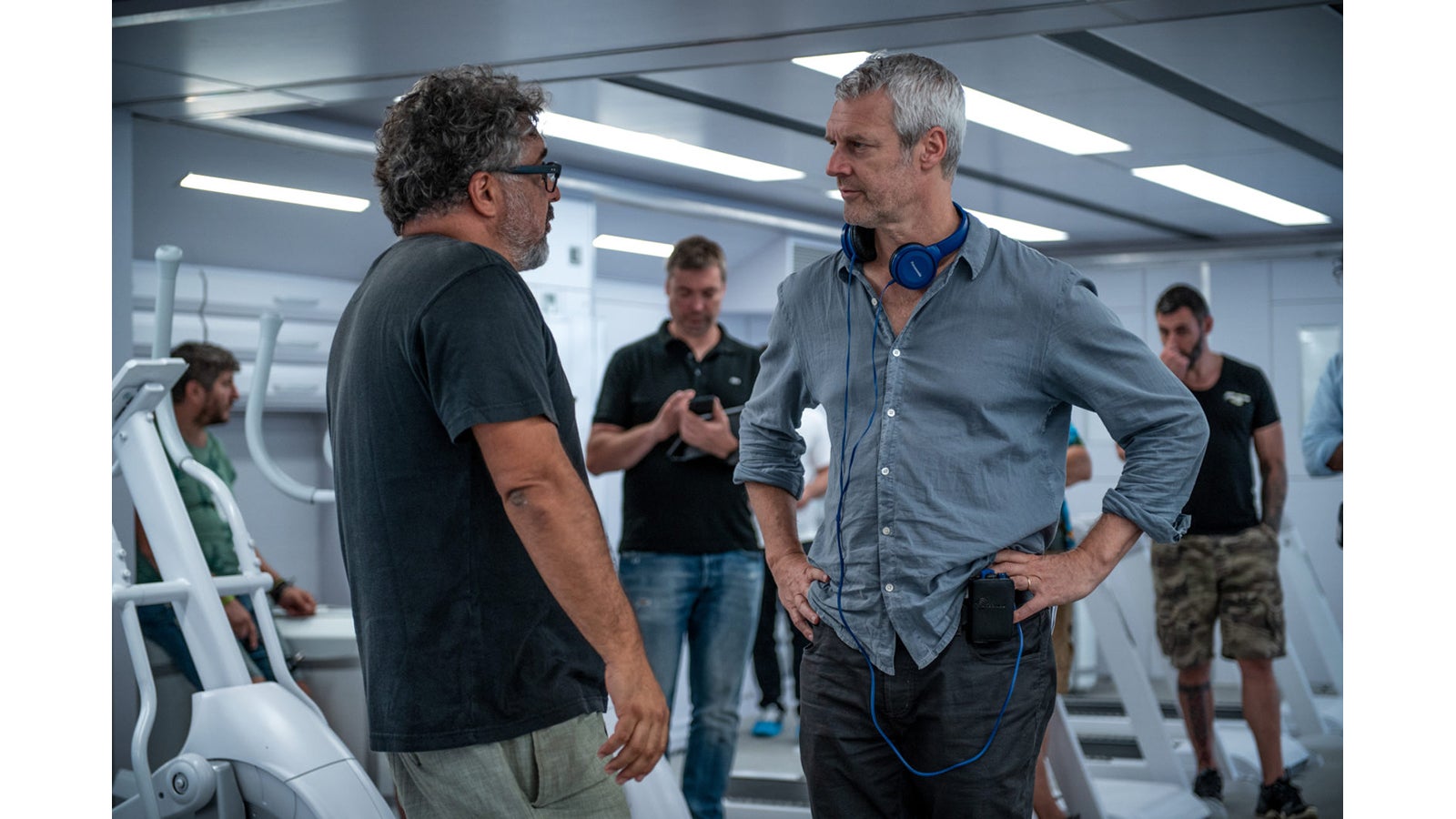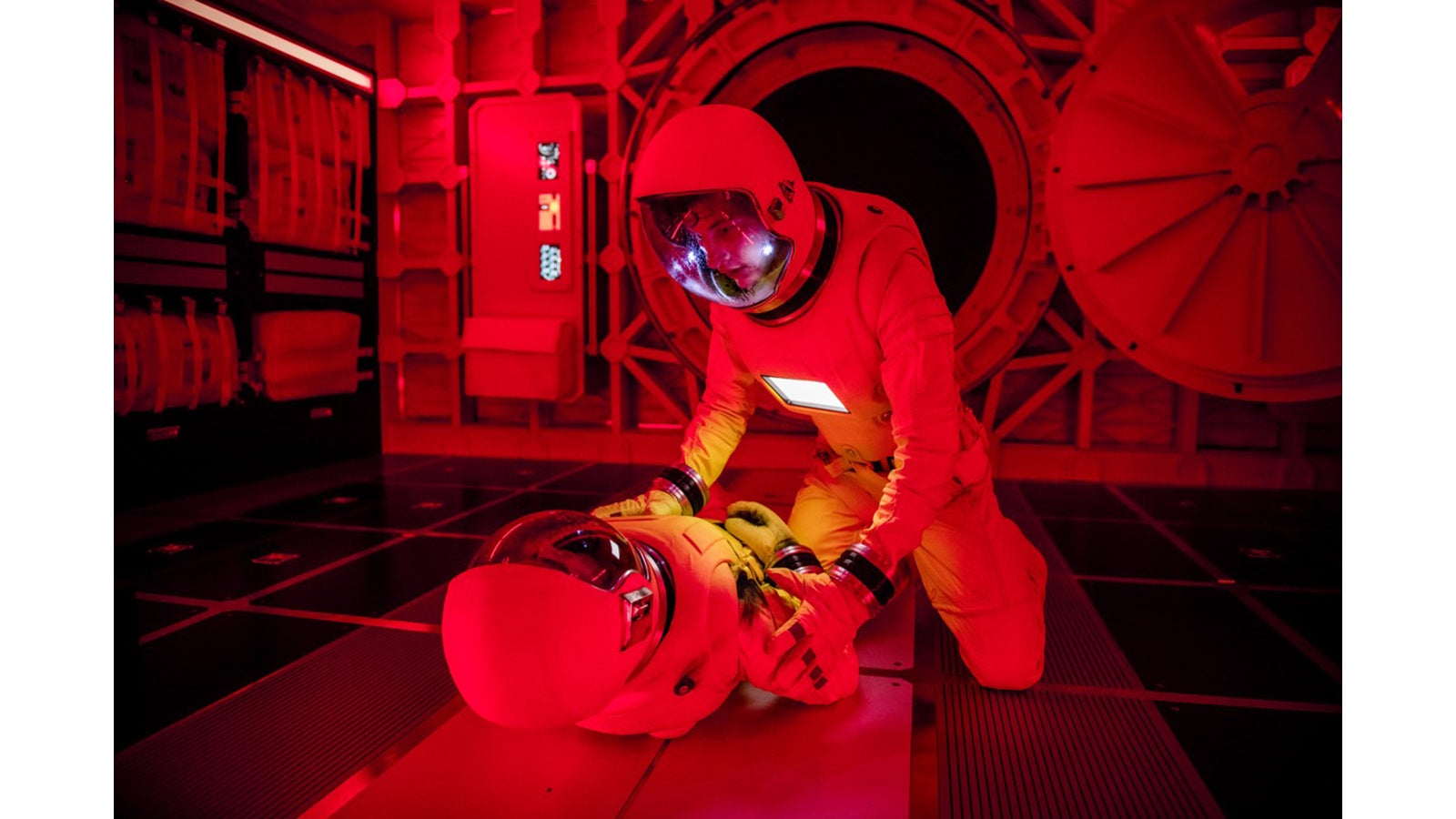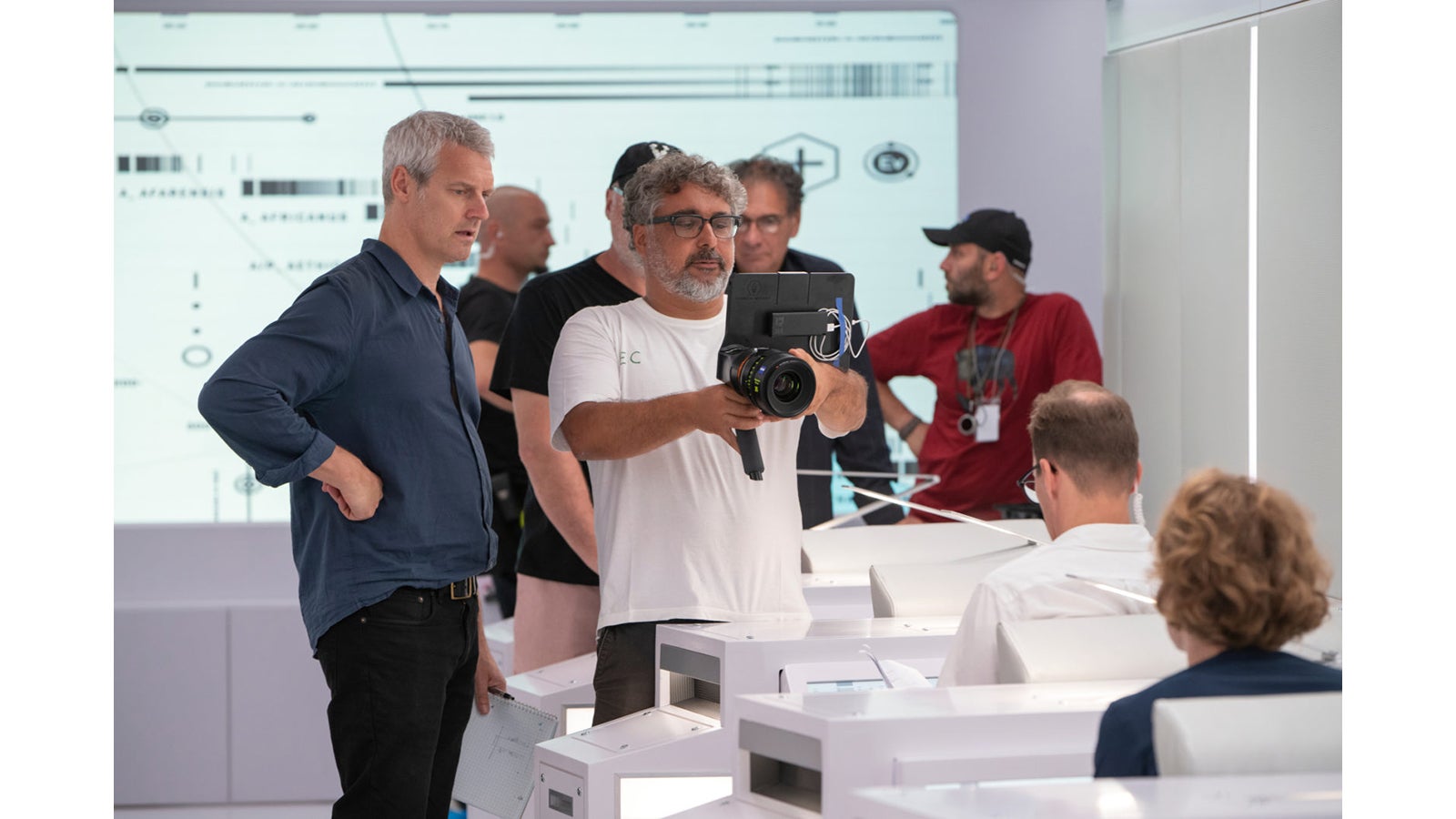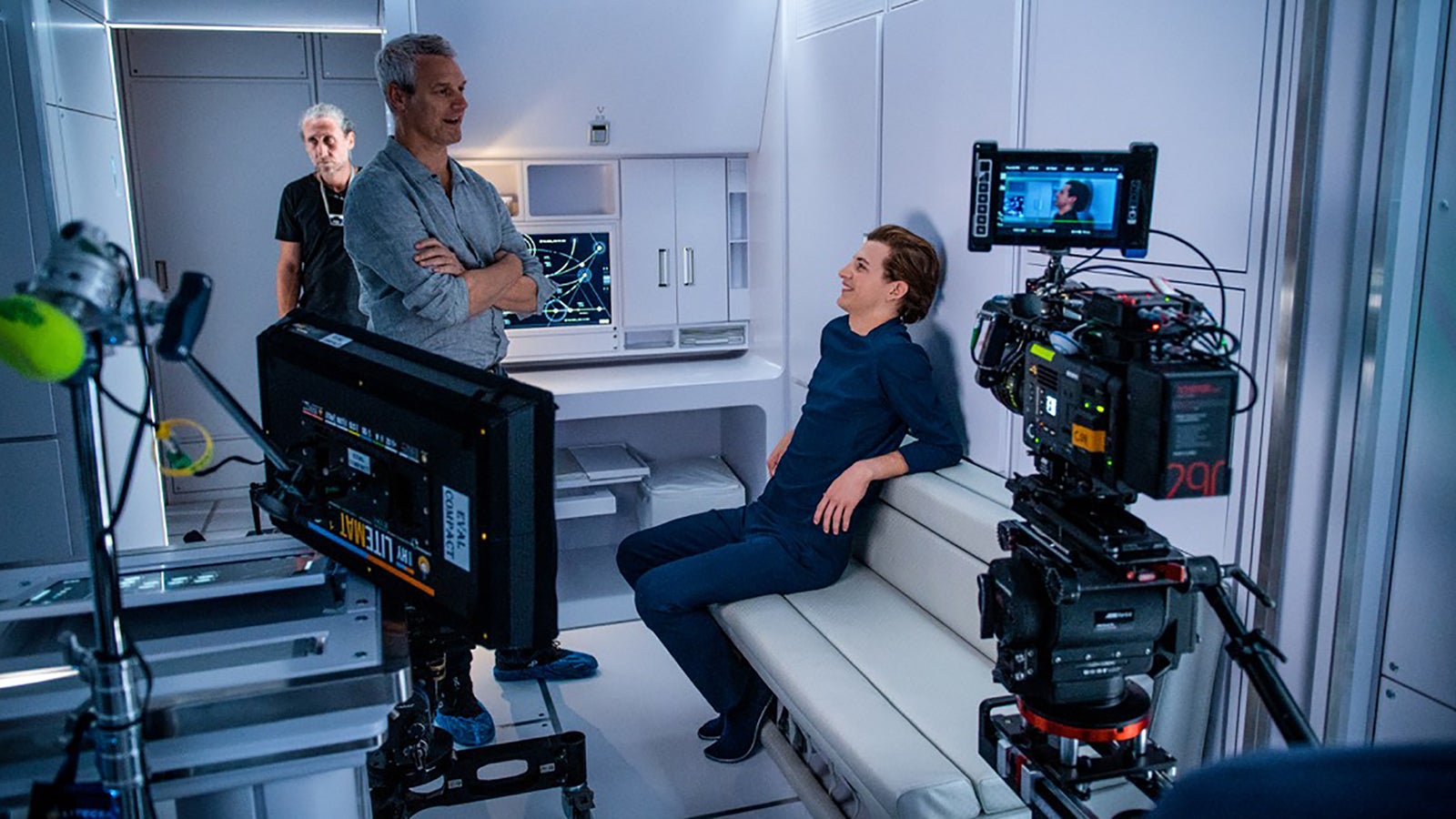
05-10-2021 - Case Study, Gear, Technology
Shooting Sci-Fi Feature "Voyagers" with ZEISS Supreme Primes and Sony VENICE
By: ZEISS Cine Team
Reprinted with permission. Original story can be found at this link: https://lenspire.zeiss.com/cine/en/article/voyagers
ZEISS: Thank you very much for the opportunity to conduct this interview with you, Enrique. Yesterday I saw Voyagers and it blew me away. The film’s themes and your approach to the story left me reflecting deeply about humanity. Where we are today with all these great technological advances – such as the recent arrival of the ship to Mars that traveled a speed of thousands of km/h – yet, despite this progress, we are still human.
We continue to learn, we continue to make mistakes, we continue to have a very animalistic quality, one of many instincts. Another overarching theme is one of hope. On this planet, humans are the only animal that has free will. That ability to decide and create has allowed us to do everything we have done for better and for worse. And the feeling of hope that he leaves us at the end is beautiful. Please tell us how you got involved on the project.
ENRIQUE CHEDIAK, ASC: Director Neil Burger called me at my home in Salvador de Bahia, Brazil after seeing some of my work, and wanted to share a script for us to collaborate on. While reading it, I found the topic of humanity versus technology super interesting, particularly its exploration of how humankind is developing. Coincidentally, I found out later during our second meeting that Neil and I were reading the same books, “Sapiens” and “Homo Deus” – both written by Israeli author Yuval Noah Harari – which also address deep issues about humanity.
After that, the fit made perfect sense. I recently shot two VFX-heavy movies, "Lady and the Tramp" and "Bumblebee", which are more feel-good movies. So, I found it very exciting to work on a film that touches on the theme of humanity within a science fiction setting.
How would you describe your collaboration with Neil Burger, who served as both director and screenwriter on the film?
Neil is a wonderful director and a delight to work with. He has a clear vision of where he wants to go and how he wants to get there due to the fact that he writes and directs, but that does not make him closed to suggestions from his collaborators. Rather, he remains very open-minded and interested in hearing fresh perspectives and opinions. In addition to pre-production work and doing the necessary technical tests, we had daily meetings about each scene and its meaning. Both in the cinematographic sense and in the storyline. When you talk about the story so deeply, the shots gradually and naturally come to life.
Every day before filming, Neil and I talked again about what the scene is about. He told me his point of view and we decided where to put the camera, the type of light, etc. There was no predefined ultra-fixed shooting. Neil is extremely receptive to feedback, and since he is so close to the film, he wanted an outside perspective.

Cinematographer Enrique Chediak, ASC and director Neil Burger on the set of “Voyagers” (Photo by Vlad Cioplea)
Can you tell us about the production design?
I got involved a long time before the project had been greenlit to discuss the practical lights within the design of the ship. Practicals served as the main light source, so the lighting and production design were conceived simultaneously. I talked with Scott Chambliss, the production designer, about how we are going to put the light in the sets, what the light sources are going to be, how we are going to incorporate it into the production design. For weeks we dedicated ourselves to those discussions.
Because the light source is the ship itself, you have to be already fully illuminated. I worked with a technician specialized in LED to control the ship lighting from a console. We spent more than 2 weeks pre-lighting since LEDs have so many possibilities that you have to narrow down and precisely choose what you want so as not to get lost in endless alternatives.
We designed all of that by filming stand-ins on the ship beforehand, and that is how we arrived at the lighting design. Once you are ready to film a scene, you press a button and the lights turn on the way you programmed because everything is recorded on the computer. Then for the take you make final adjustments to neutral density, intensity of the dimmer by the angle of the light in relation to the character.

Cinematographer Enrique Chediak, ASC and director Neil Burger on the set of “Voyagers” (Photo by Vlad Cioplea)
Describe your process choosing the camera and optics on this film?
There are movies where you test for months until you decide. You keep testing different cameras and lenses and you’re still unsure. In the case of Voyagers, it was immediate. During that process of designing the sets and lighting in L.A., Neil and I went to visit two rental houses, Keslow Camera and Panavision. I generally work with Panavision, but when we went to Keslow we tested the Sony VENICE with Supreme Primes and the Rialto extension accessory. The ship was quite small, claustrophobic in some spaces, and we needed a camera and lens configuration that was lightweight, compact, and could move in a confined space.
I really liked the definition of the camera-lens combination which was perfect for a Sci-Fi movie. I usually use softer lenses but once I put the Supremes on the VENICE, I stopped looking because I had found the right lens for the project. It's like when the glove fits your hand perfectly.
Another thing that I love, which was fundamental in this movie, is the ability to get close to the characters given the extreme close focus distance of the lenses. I leveraged that a lot in the movie.
The Supreme Primes are wonderful optics with a very rich definition. And the fact that with a wide angle you can get very close to the subject’s face was a very important feature. It was great to be able to achieve that without using any type of diopter. We loved that. Basically, Neil and I saw each other and said, this is it!

Lionsgate
Is "Voyagers" your first movie shooting in Full Frame format?
I used full frame on "Lady and the Tramp". I really like the format. I’m a cinematographer who has worked a lot with ARRI Alexa, but in this film we chose the Sony VENICE for the palette. Each film has its own unique color palette.
For lensing, I opted for ZEISS Supreme Primes. I like the image quality and the way the bokeh behaves on these lenses in combination with the Full Frame. For me it is a delight.
How would you describe a cinematographer’s relationship with the DIT and colorist, two roles that are now so integral to the filmmaking process?
For me, there is a great advantage to having the DIT on set. When there is free time during filming, or at the end of the day I work with them and convey my intention, in terms of color, very clearly. I do some takes with the DIT and send that to the dailies colorist to match everything, then I see photos. I don't view dailies because what I see on the DIT’s monitor is better than what I can see on a monitor at home. I look at the photos and compare them to what did with the DIT on set. From there I either sign-off or send corrections to the dailies colorist. Then those EDLs go to the final colorist on the project, which, in this case, was Joe Gawler at Harbor Picture Company. He was inspired by the extraordinary work done by the dailies colorist Glen Castinho, who accompanied me on set during the filming in Bucharest.

Cinematographer Enrique Chediak, ASC and director Neil Burger on the set of “Voyagers” (Photo by Vlad Cioplea)
What was the biggest technological challenge of the film?
There are two challenges: the technological and the artistic. The technological one was that of the lights and the colors of the light depending on the intention and emotion of the scene. The process of choosing the right lighting from so many options was a bit of a challenge. On the other hand, the camera traveling down the hall on the spaceship was complex thing to achieve, but the key grip and his team solved it with a technology almost invented on set. The sets were quite tight and to make the camera travel we had to build a very small track on the ceiling with a small motorized dolly that could travel a considerable speed all the way down the hallway.
The artistic challenges were 1) that Neil wanted the spaceship to be white. And you know that white can be an enemy of the DP. Both Scott Chambliss (the production designer) and I tried to appeal Neil to other options, but he said no, the ship is white. And we went white. We did a lot of testing for materials, reflectance, and the right shade of white. Working with such a white set was challenging because we were also trying to give the ship different personalities for each scene. Since the set does not change, what changes is the light. The personality of the ship changes according to what each scene requires psychologically.
Check out this look behind the scenes of "Voyagers" (Courtesy of Lionsgate)
Did you use ZEISS eXtended Data (XD) technology in the project?
Of course. We did utilize the XD feature of the Supremes, and it was very beneficial. The technology itself almost acts as an assistant. The metadata was sent to the VFX team in Czechoslovakia. Despite this, they still charted all lenses.
Voyagers was released in theaters on April 9. Do you have thoughts on the moviegoing versus home viewing experience?
Now in this new normal, I think it is very successful that it will be screened in a movie theater in a dark environment - makes perfect sense. I love the idea and it was filmed with that viewing experience in mind. Many people will probably watch it on a computer or in a room at home, but it is a film intended to be seen in theaters. Lionsgate insisted on launching this movie in theaters and, of course, that is great.

Lionsgate
Tell us your story. You are a symbol for Latin American and Ecuadorian cinematography. How did you find success in the American industry?
I was born in Ecuador 1967 and lived fully there until I graduated from high school in 1986. In my country at that time there was very little cinema being made. There was a director or two who made documentaries. For me, cinema was entertainment. I used to go to the cinema to see fun movies. When I was 16 years old, I saw ¨The Wall¨ which was more artistic than anything I had seen.
Growing up, weekends were spent in the mountains, hiking, climbing, – always in nature. That led me to greatly appreciate the indigenous communities, the coastal towns of my country and the small towns in the jungle of Ecuador. I developed an appreciation for the native people that really opened my mind.
Not knowing what to do with my future (at that point cinema was an impossible way of life to choose) I left to study finance in Boston, which I did not like, and ended up in Morocco taking still photos with a 35mm camera that I bought with my graduation money. I went to study photography in Madrid, but I still didn't know what I wanted to do.
On one trip to Chile, walking in the streets in Santiago, I saw a very special group of people who was totally different from the people that lived in the Pinochet’s society of that time. I went to check what was inside the house where they were and found out it was a communications institute. I decided to stay in Chile and to study there. It was a clandestine institute. All the teachers were exiles returning to Chile even though Pinochet was still in power. I had the best teacher I have ever had in my life. His name was Francisco Bruñoli, he was an art history and architecture teacher who later became the dean of the Museum of Fine Arts.
The institute was a wonderful intellectual hotbed but very poor in resources. And that's when I discovered video art and auteur cinema. And I started working in video art and film very intensely, it was as if I needed to recover a lot of wasted time. I won several awards in Chile and abroad in France. Once I finished in Chile, I manage to get a scholarship as a TA in NYU Grad school in Directing and Cinematography majors. From there I came out with several thesis films, but one of them, "Hurricane Street", won the Audience Award, Best Cinematography and Best Direction at Sundance Film Festival, and that's where my career began.
I started late, very late. But all those processes were a delight. I believe that the process is more important than the result. I think that the technical part is like learning to write. Once you learn to write you already have it in your head, but the important thing is what you write, what you say and that takes time.

Lionsgate




